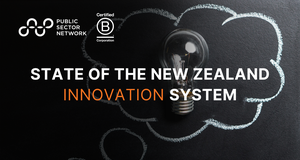I recently participated in a panel discussion for Infrastructure Partnerships Australia on the topic of Infrastructure End Users. There was a strong premise that, as providers of infrastructure and services (Government or otherwise), we need to have a customer mindset about our users - including listening to what they have to say in the planning, delivery and operation of infrastructure. Because those customers have more power and influence than ever before.
When reflecting upon the extent to which we listen to our end users, I cant help but emphasise our presumptions when we use the word customer.
We refer to an individual as our customer because we care what they think. NSW Government has made inroads into gathering information from its customers, listening to them, and making huge improvements to its services as a result. And our relatively newly-established Department of Customer Service is testament to just how important this is to us.
But how do we engage with customers who dont have advocacy? Who have complex needs and vulnerabilities? Who cannot tell us their preferences because theyre homeless or theyre just kids or theyre one of the 13,700 citizens currently sitting in prison?
What about the unattractive customer?
These people probably have more touch points with government (for example, along the life trajectory that leads them to prison) than the people I interact with on a daily basis. But we need to continually revisit the adequacy of the mechanisms by which we quality test the provision of
their
services, so that we can focus on better outcomes, moving beyond doing things
to
them, and toward doing things
with
them.
Whilst many end users/customers have more power and influence than ever before, this isnt always the case. What about end users of a school canteen in a struggling socioeconomic area which doesnt have adequate facility standards to obtain the licence required to serve
fresh
food? What power do those users the kids who are at risk of poor health outcomes (and even their parents)
really
have?
Or the 300 kids currently in detention in NSW correctional facilities? Half are on remand (many detained because they have no fixed address surely were now at the point of sophistication to be able to solve
that
problem?) and half of them are Indigenous Australians. They assert their power and influence by climbing up on a roof. For all the razor wire and slip roofs and the infrastructure solutions well no doubt employ, were told by the correctional officers that if we had better conversations, these situations may be avoided altogether.
So what does integrated, customer-orientated service provision look like for societys vulnerable? Whilst its fair to say that were working on it, its much more complicated than a service centre where we can renew our drivers licence and switch our energy provider at the same time. But that wont deter me from using the very progressive and exceptional Service NSW model as a starting point for how we can bring together multiple needs in a tell us once/ single transaction / positive customer experience sort of way.
So, as we think about the really important topic of customer service, lets try and remember that not all customers look, act and have the same life circumstances as us. And in fact, its likely that government and other service providers have the power to add more value to the life of an unattractive customer than they can to anyone else.
------------------------
Author:
Amy Brown
,
Deputy Secretary, Strategy & Delivery at Department of Premier and Cabinet (NSW) (*but views are my own)
Original article:
https://www.linkedin.com/pulse/unattractive-customer-amy-brown/





















